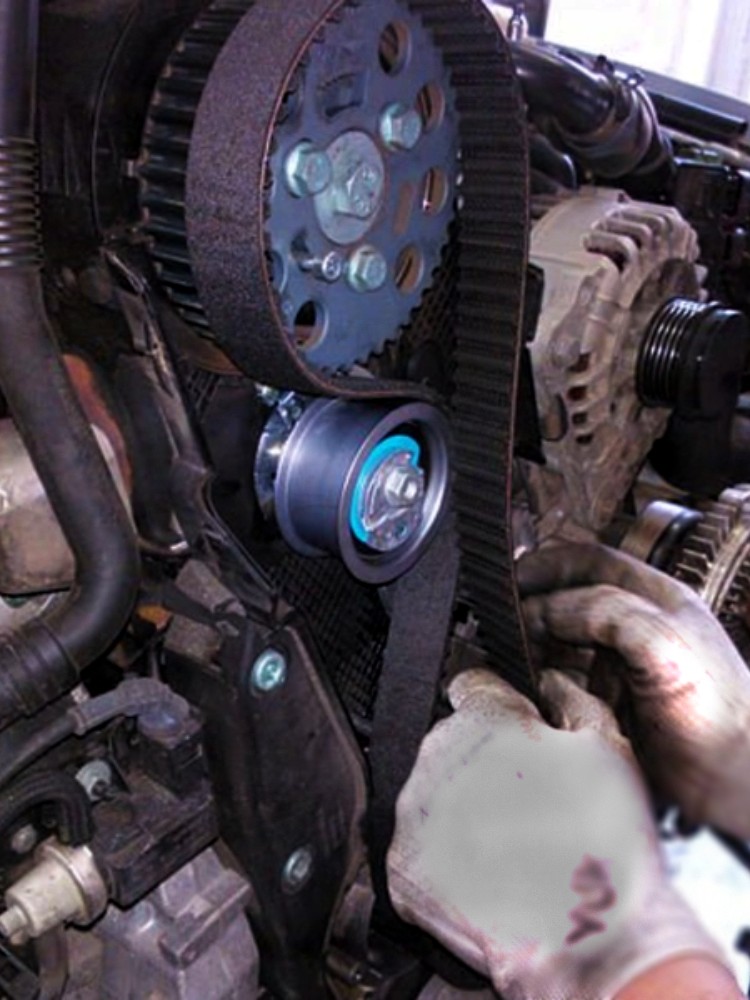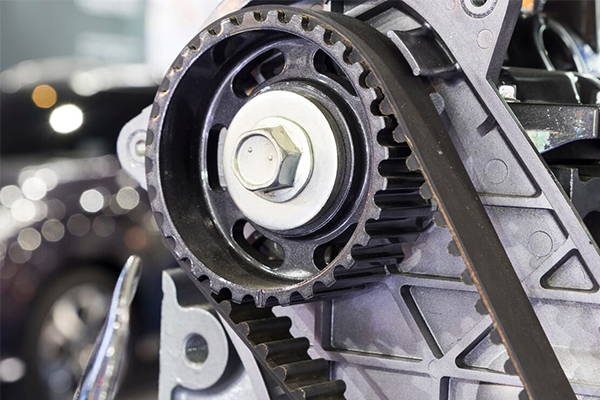All About the Function & Replacement of Your Timing Belt
A timing belt, also called timing chain or cambelt, is a part of a vehicle’s internal combustion engine that synchronizes with precision the rotation of the crankshaft and the camshaft so that the engine’s valves open and close precisely at the proper times during each cylinder’s intake and exhaust strokes to allow for the seamless operation of the engine. It is also critical to preventing the piston from striking the valves in an interference engine. The timing belt is a reinforced rubber band with notches or teeth on the inner side and connects the engine’s crankshaft to the camshaft, playing a vital role in controlling the valves and pistons in the vehicle’s engine. The timing belt is set in motion as the crankshaft turns. The timing belt then turns the camshaft and closes or opens each valve and allows the pistons to move down and up. Four-stroke engines, for instance, have four phases: the intake phase, compression phase, combustion phase, and exhaust phase. In the intake phase, fuel and air get pulled into the cylinders. In this phase, the intake valves are open and the exhaust valves are closed.

In the compression and combustion phases, all of the valves are closed and the fuel and air is mixed, compressed, and then ignited by the spark plugs. The exhaust phase is the final stage where the fuel and air that remains exits out of the exhaust valve. The exhaust valves are open and the intake valves are closed in this final phase. The timing belt must precisely control all of the closing and opening of the valves and the timing of the pistons throughout each of the four (4) phases. So it is in the precise order that the timing belt allows each step to occur. The entire engine will fail if the timing belt fails in its mission. The timing of the pistons and valves can be thrown off by a timing belt that is stretched or worn. That can cause the pistons to hit a closed valve and damage or bend the pistons and valves. Go-Green Auto Service Corp reiterates that, if you’re driving around with a timing belt that is stretched or worn because you didn’t check and replace it when it was due, it can cause such serious damage to your engine’s pistons and valves from its disruption of the timing of your engine, that this will lead to a much more expensive repair for you. The typical lifespan of a timing belt generally is from 60,000 to 100,000 miles. But the best way to be certain is to always follow the indications on your particular vehicle’s owner’s manual, regarding the replacement of your vehicle’s timing belt. Its replacement should only be performed by a car-care professional like Go-Green Auto Service Corp, because it is a difficult process that may require moving other parts in your engine, such as the water cooler. And because right after the new timing belt has been installed, it must immediately be synchronized with the camshaft and crankshaft in order for it to properly operate with precision. We are experts in replacing timing belts and seamlessly perform it with the highest quality while you wait. You won’t have to wait long, either, as we replace your timing belt at the best price around. You can never go wrong when you Go-Green in Brooklyn!





0 Comments